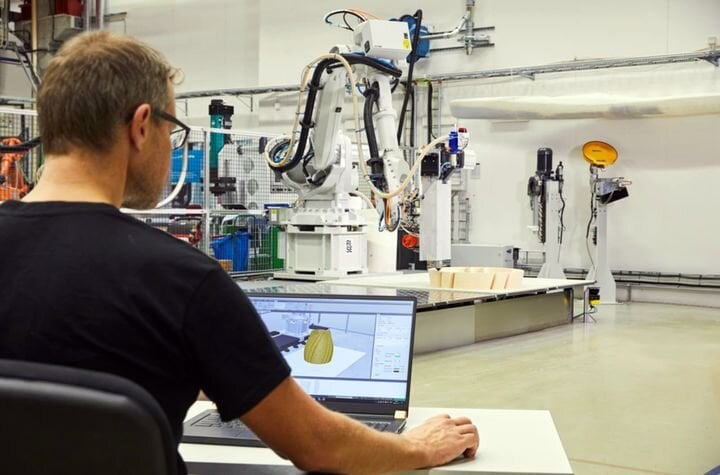
In hindsight, it was only a matter of time before 3D printers and robots would find each other.
The two technologies are a perfect match for each other. The addition of a free-form robotic arm to the print process brings much more than just speed and agility to traditional printing operations.
Robots can not only print much larger objects faster, but a robotic 3D printer can also control the build platform on which the part rests during the printing process. The ability to orient this platform as required reduces the need for support structures, which results in better material management and less waste.
The incorporation of a 3D print nozzle onto a robot head is also a big step toward integrating the additive manufacturing process with conventional automated production methods. Robotic printing is still in its infancy, but it is already becoming apparent that this technology will have an essential role in the smart manufacturing plants of the future.
ABB, an industrial and collaborative robot provider that operates in more than 100 countries, has further strengthened the bond between these two technologies by introducing 3D printing capabilities to its RobotStudio simulation and offline programming software, which will enable users to program ABB robots for additive manufacturing in just 30 minutes.
As part of RobotStudio’s PowerPac portfolio, the new 3D Printing feature eliminates manual programming to allow faster prototype production. The 3D Printing PowerPac supports a variety of processes, such as welding and printing, with granules or concrete and is ideal for low-volume, high-mix printing.
Traditional 3D printing methods are time-consuming as programming the printing paths involves plotting millions of points and trajectories. With ABB’s new 3D Printing PowerPac, any standard slicer software design can be “translated” into ABB’s simulation environment and robot code. An operator can progress from the CAD design stage to the final modeling of a product in just half an hour.
Read more at ENGINEERING.com

